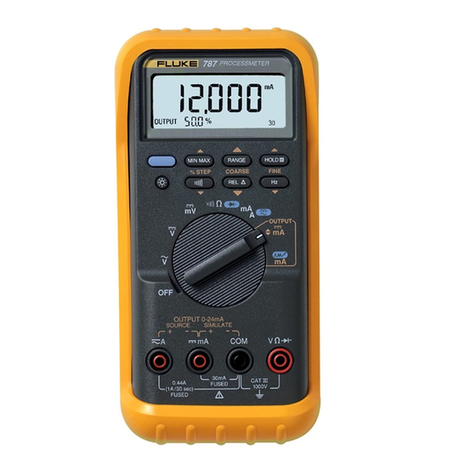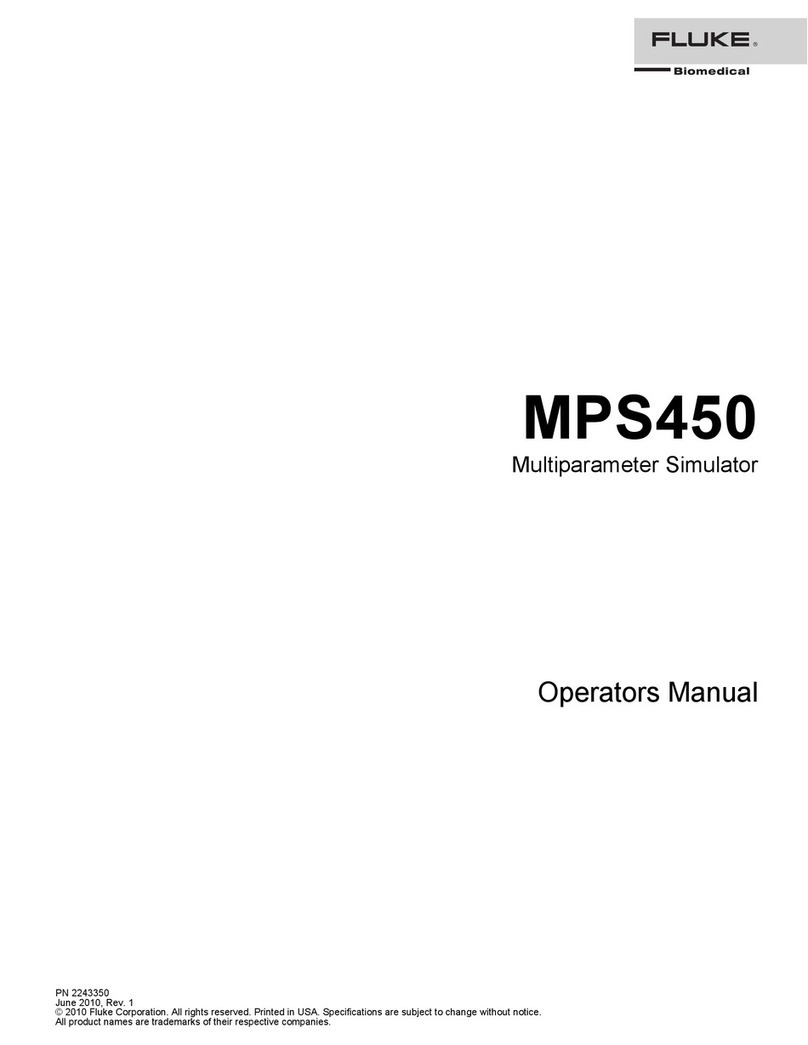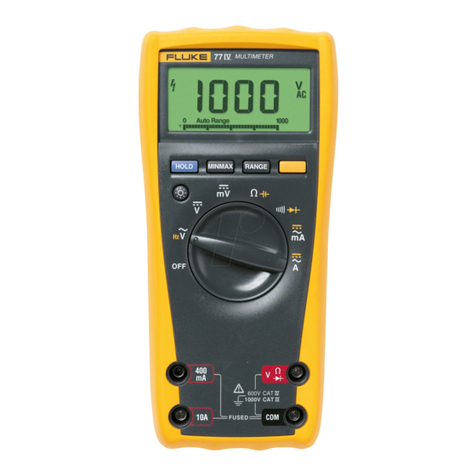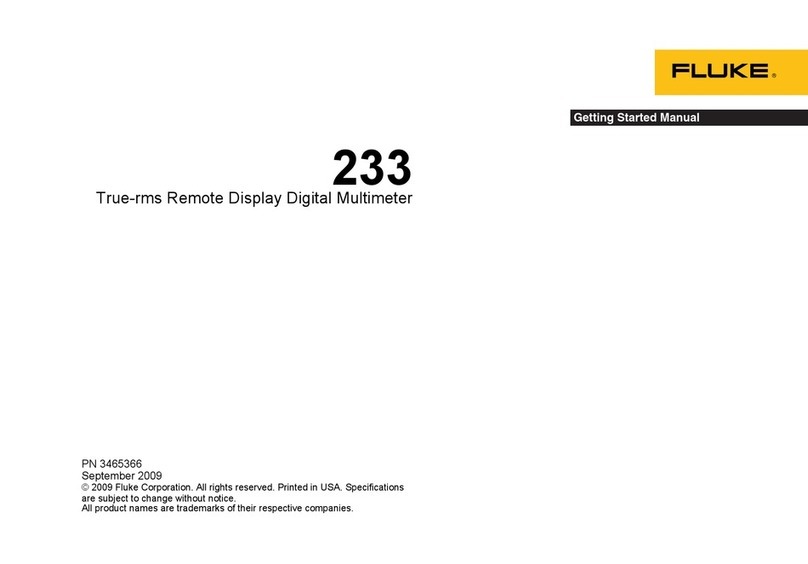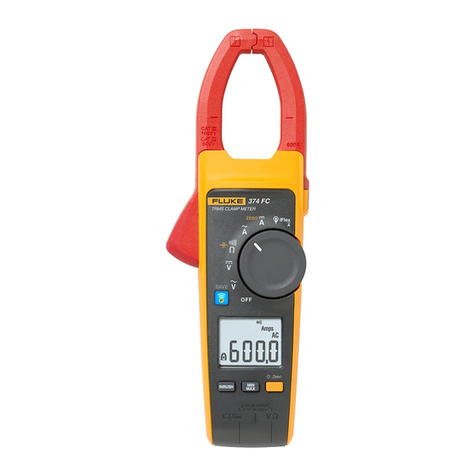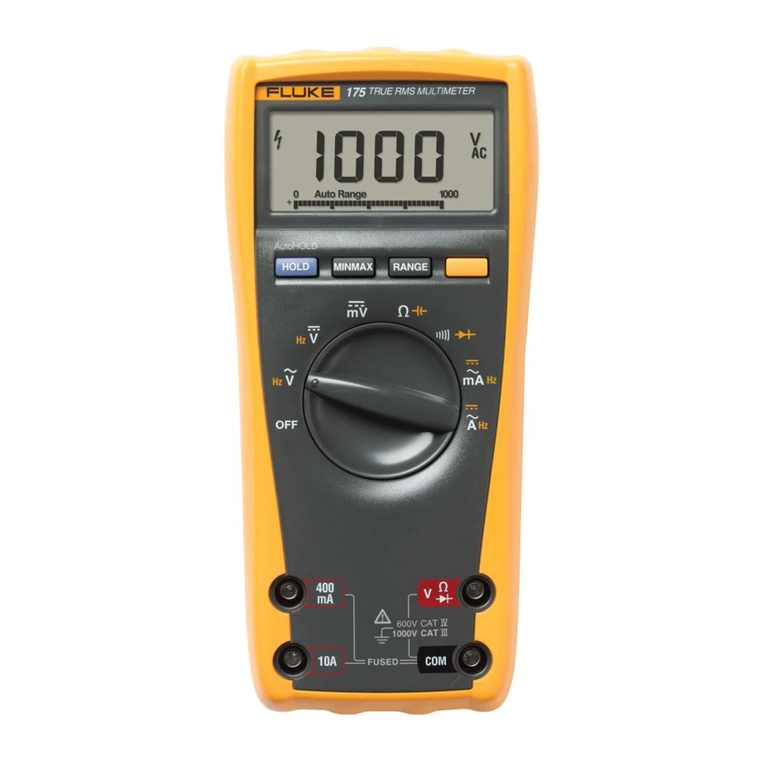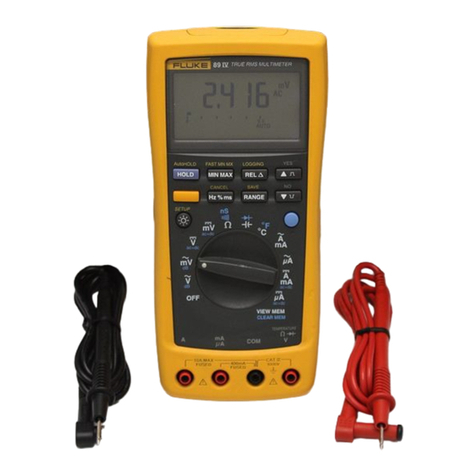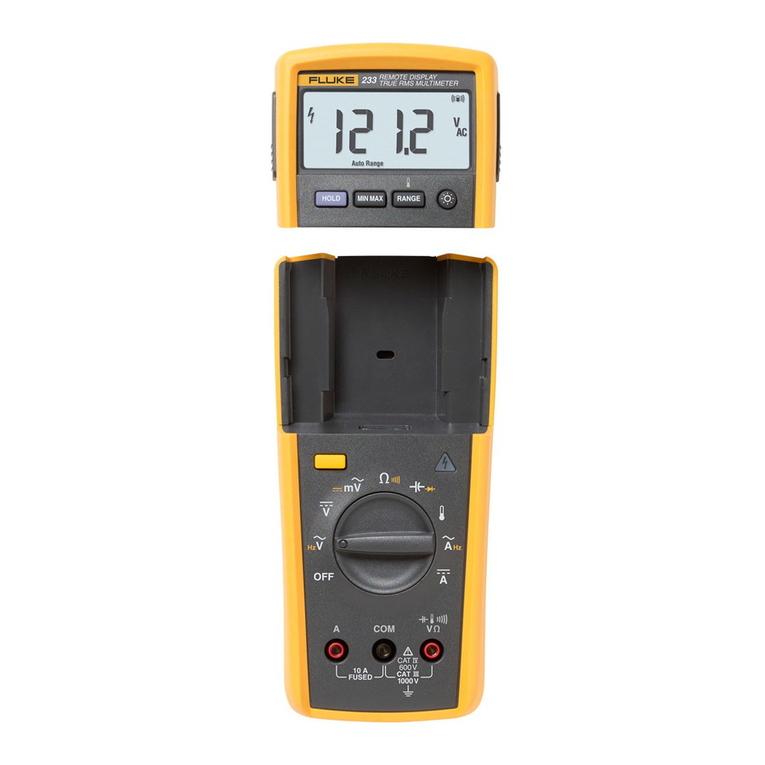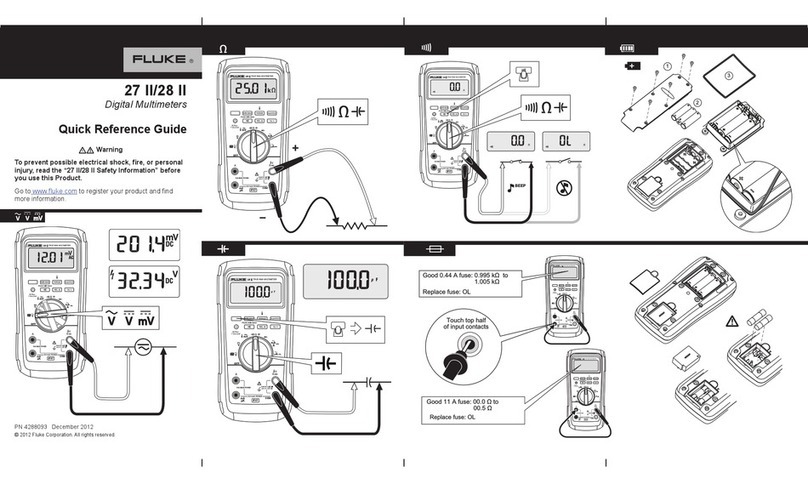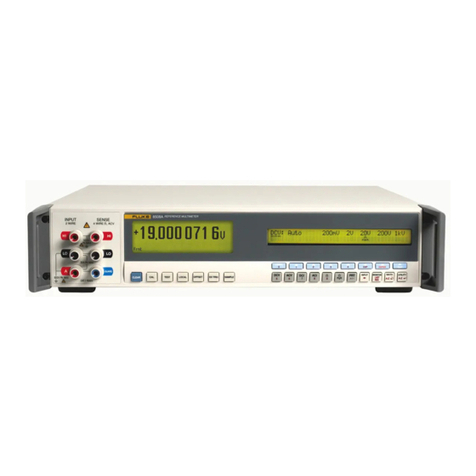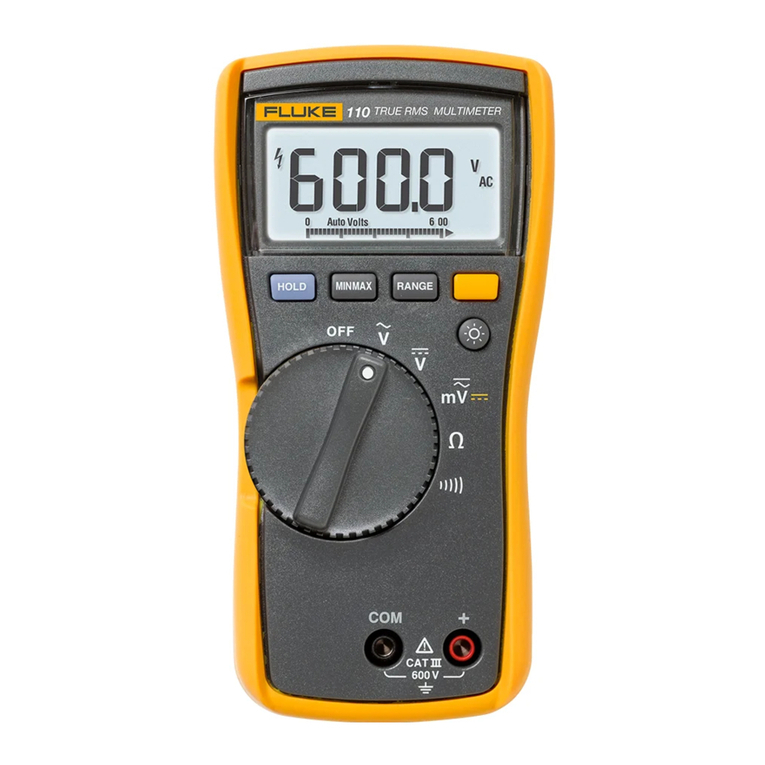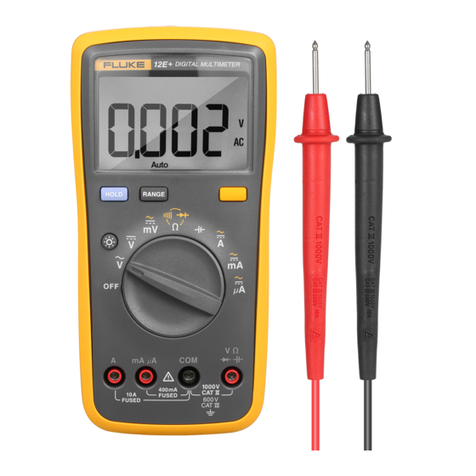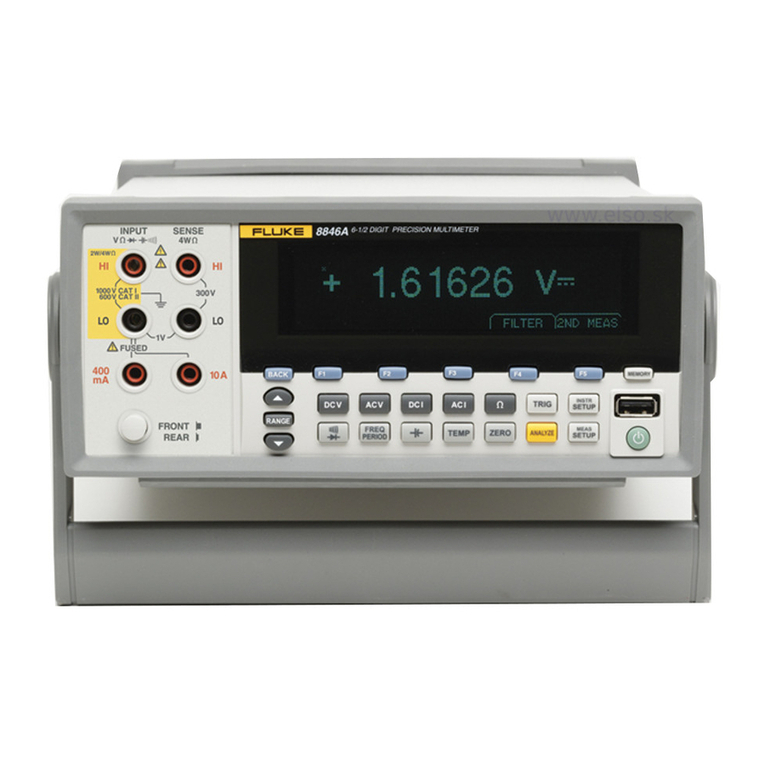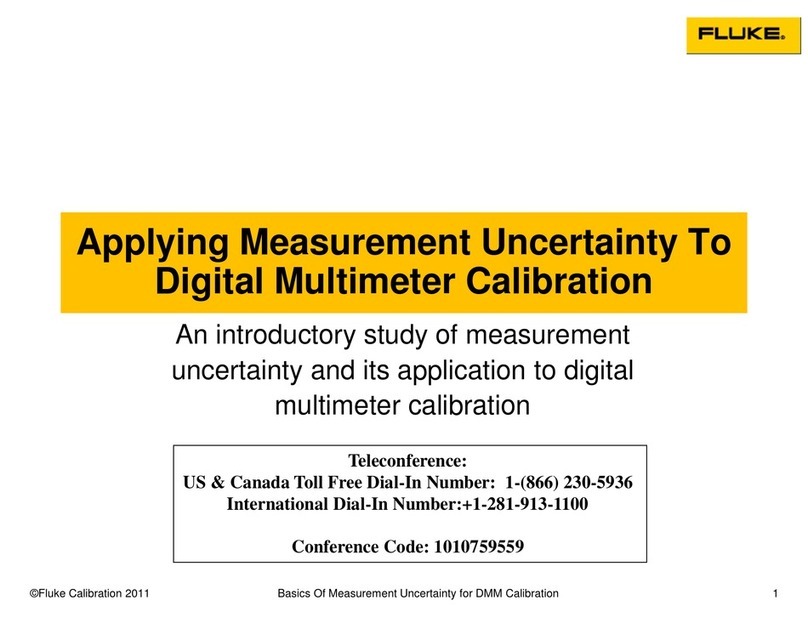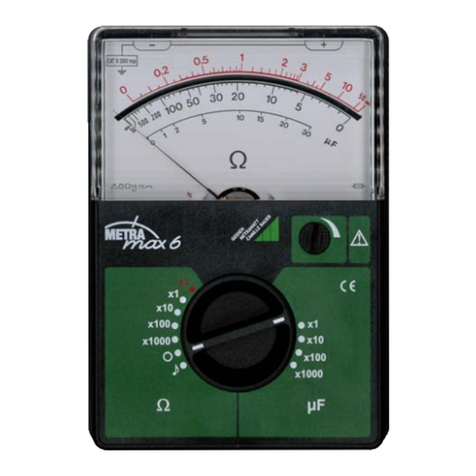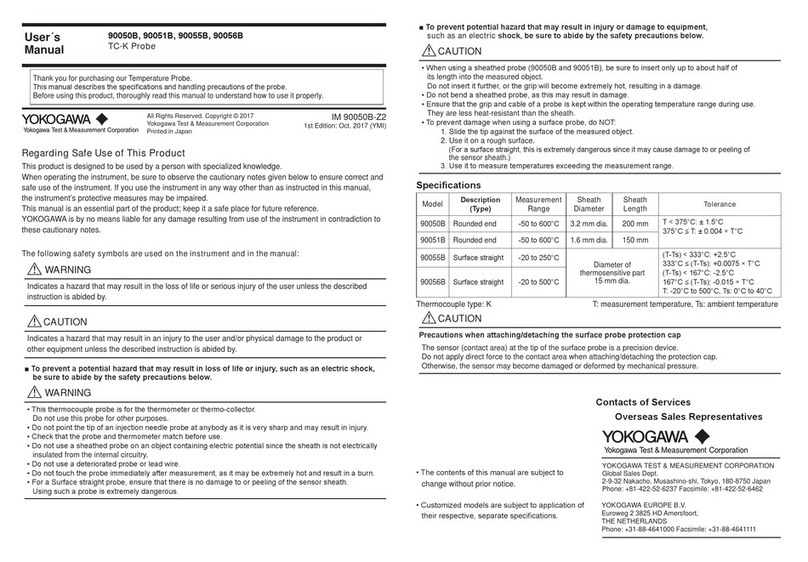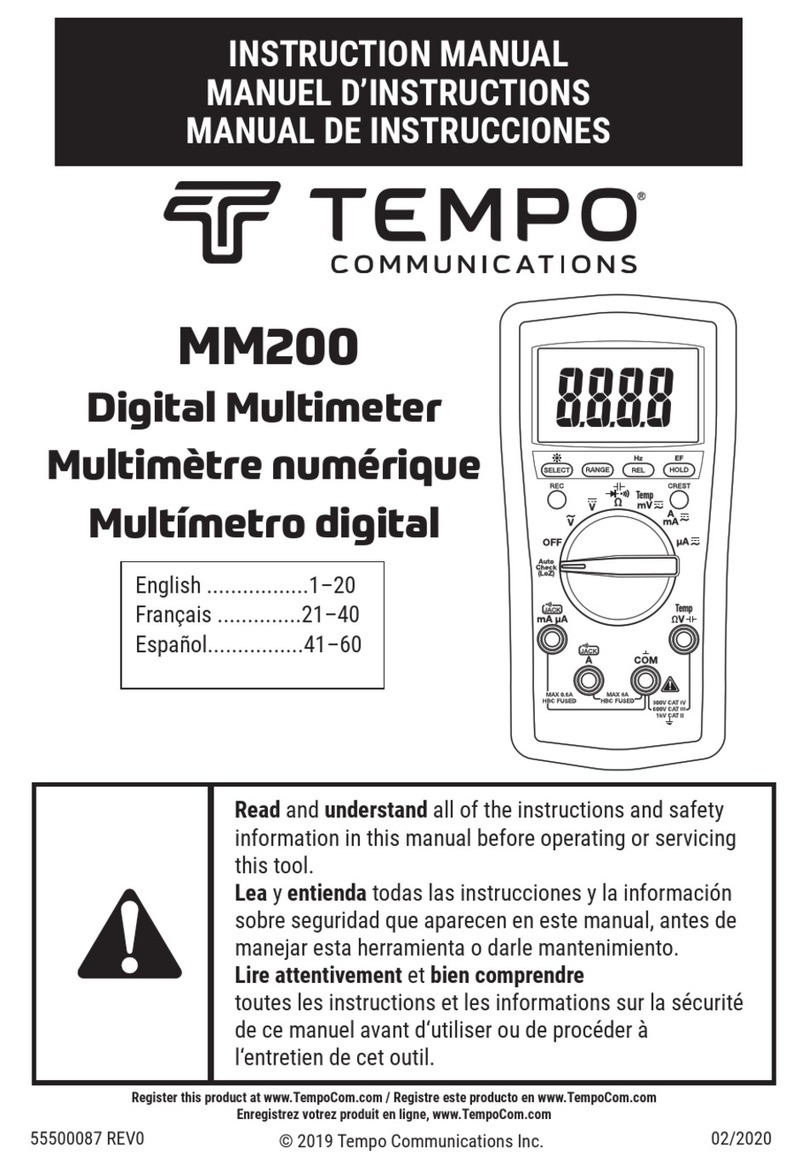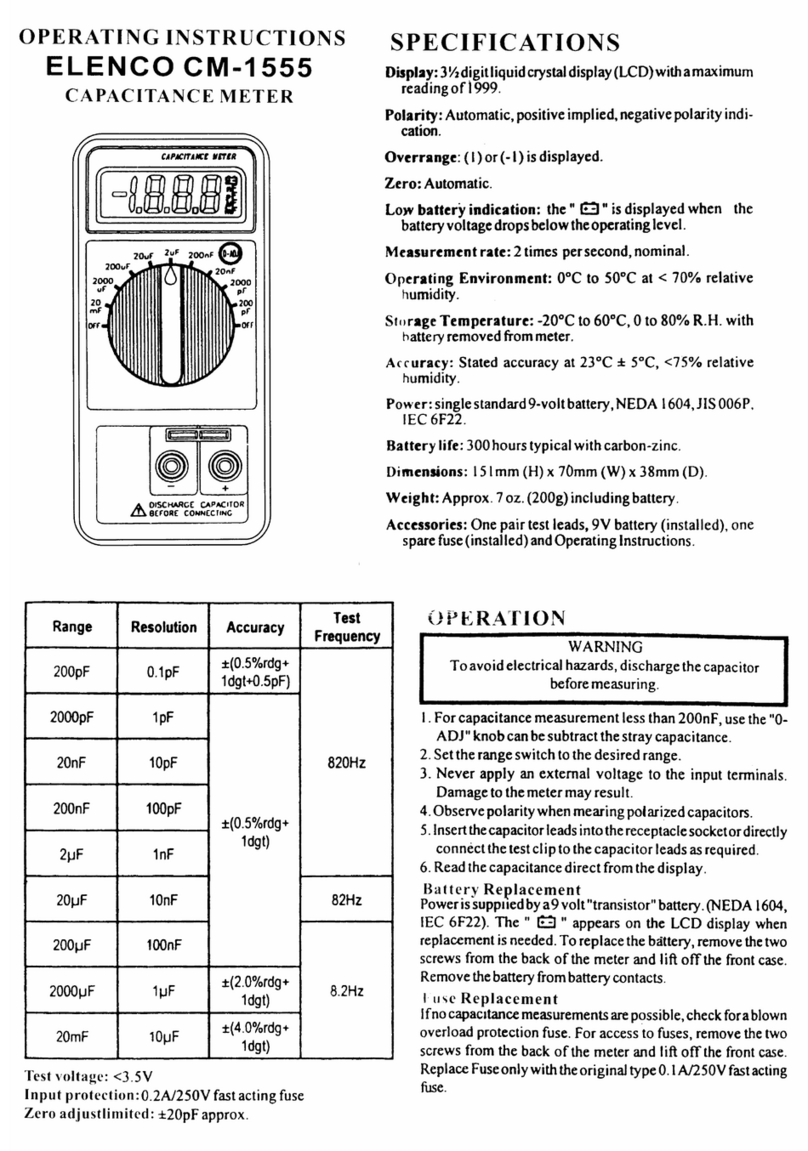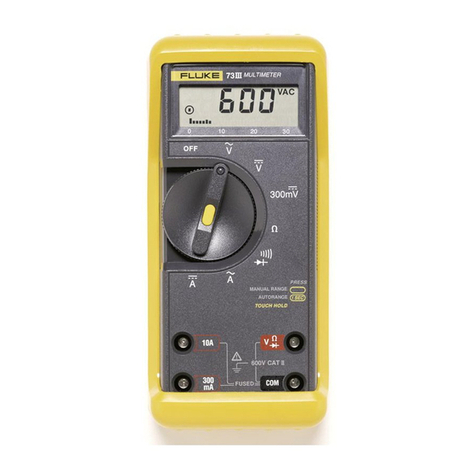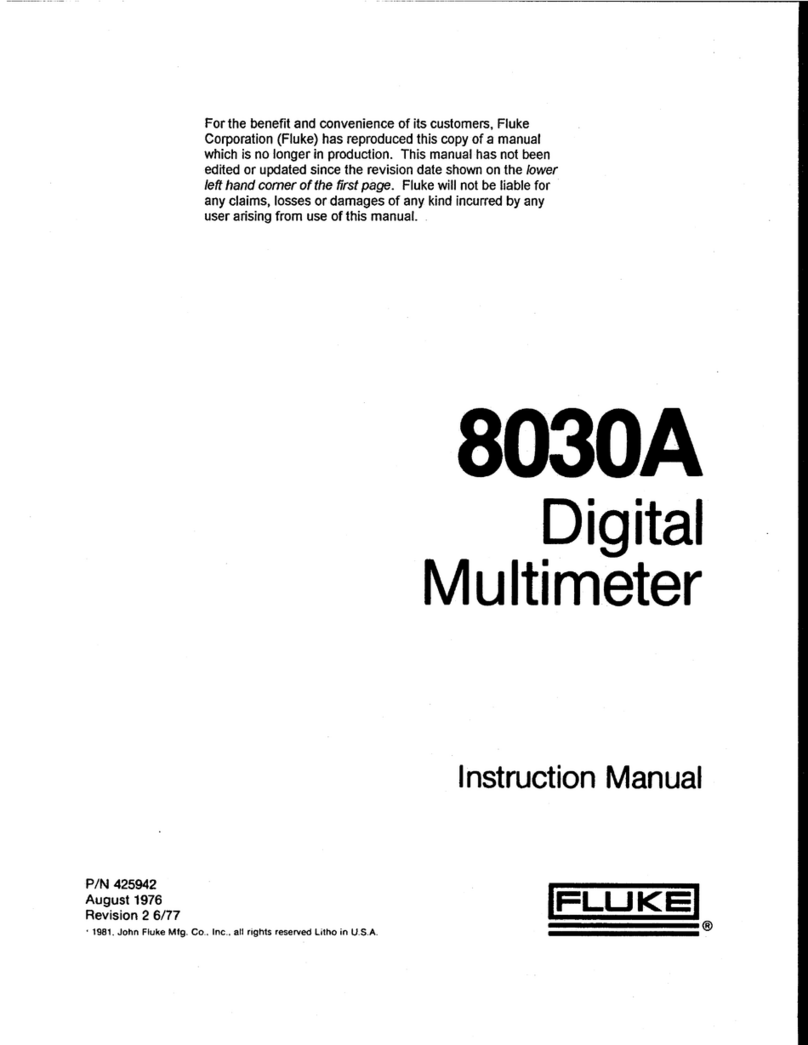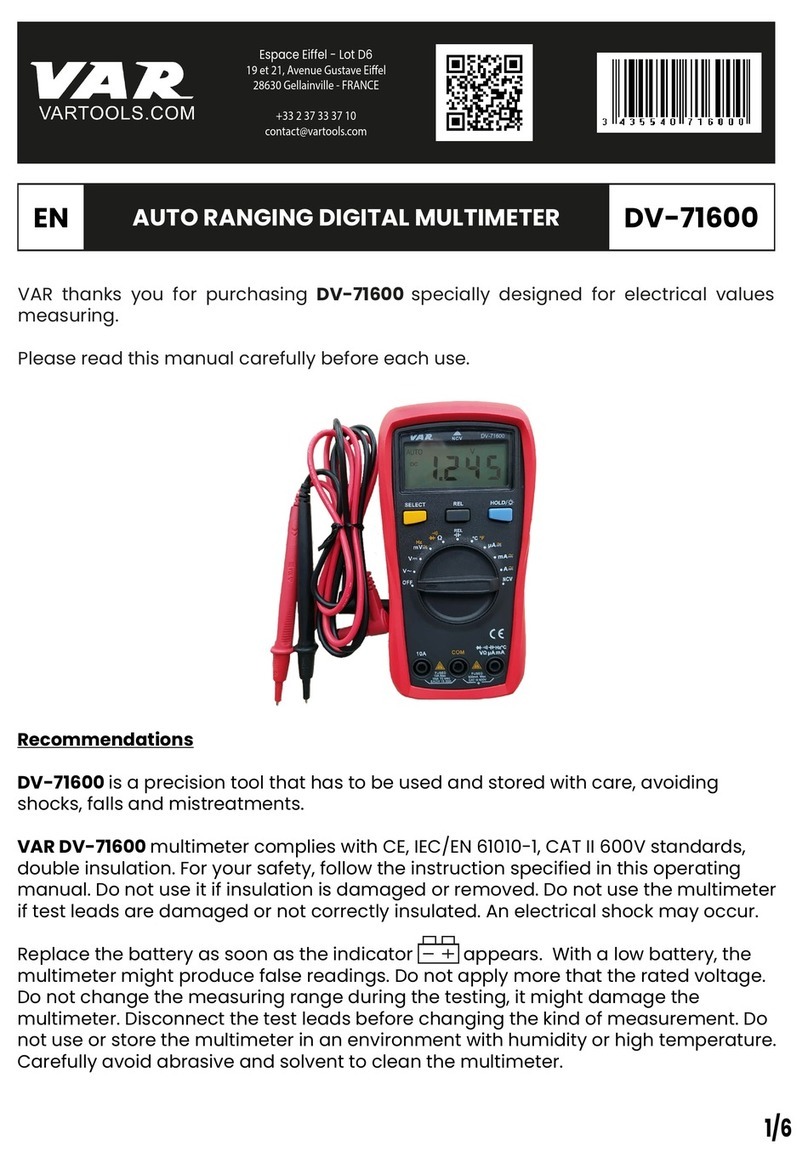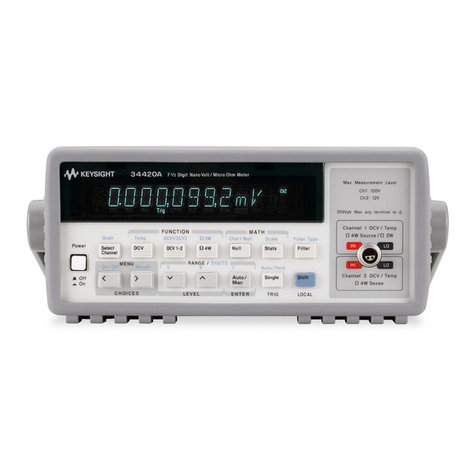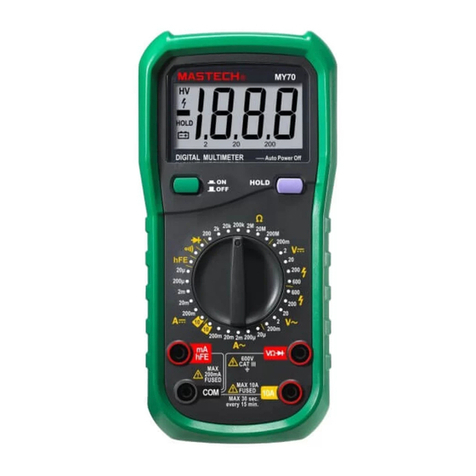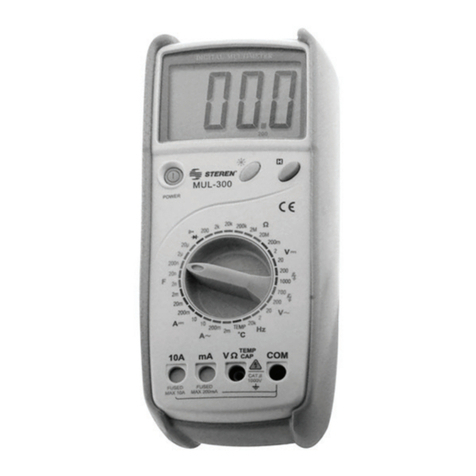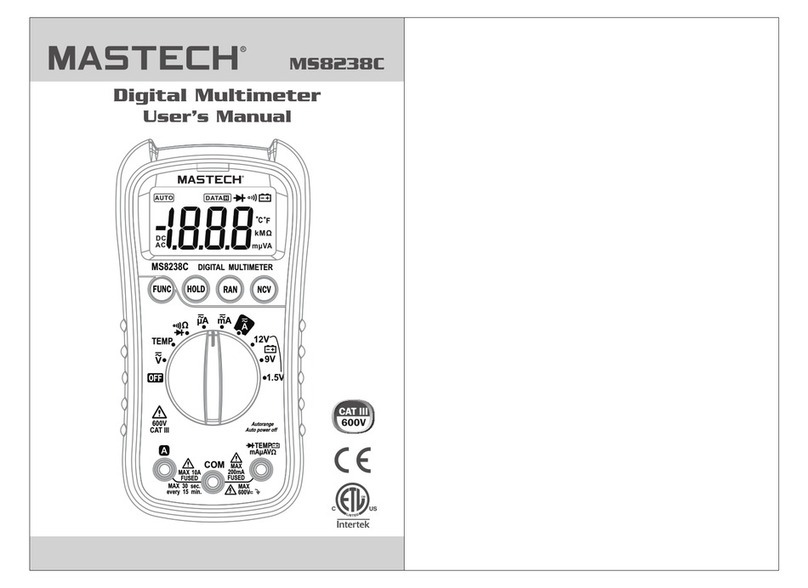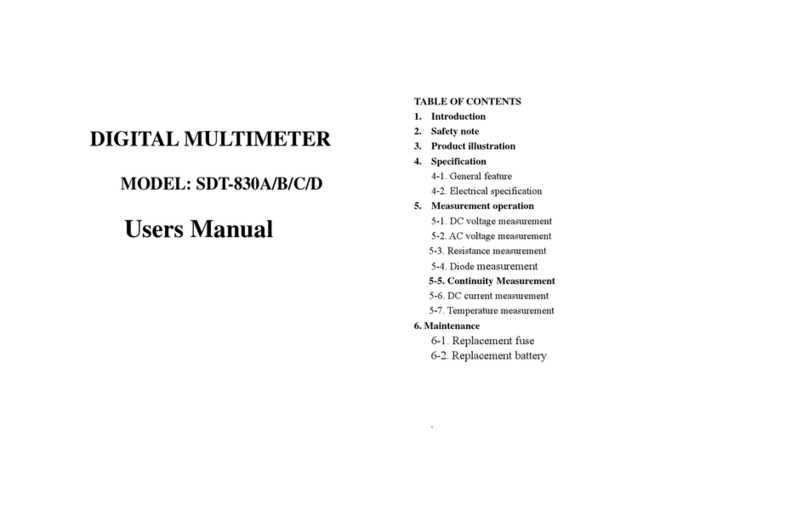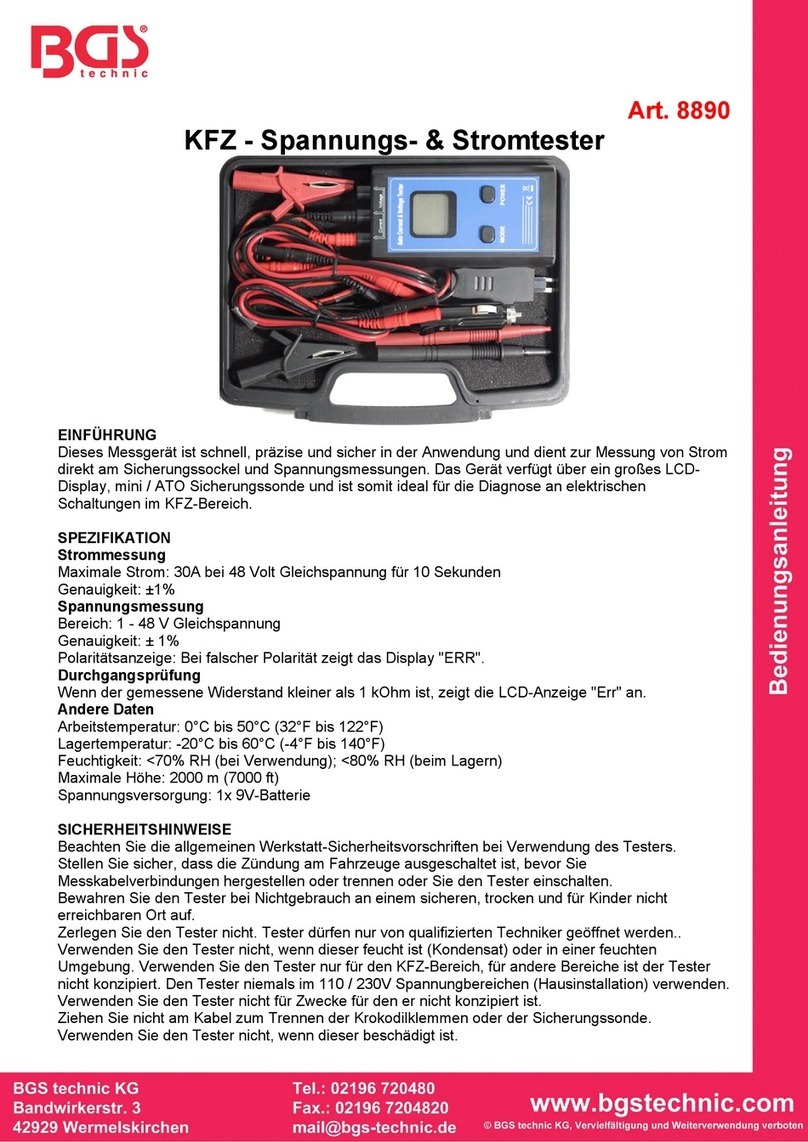
Digital Multimeter
General Specifications
5
General Specifications
Maximum voltage between any
terminal and earth ground ........................................... 1000 V rms
WFuse for mA inputs.................................................. 0.44 A, 1000 V IR 10 kA
WFuse for A inputs..................................................... 11 A, 1000 V IR 17 kA
Display........................................................................... 6000 counts, updates 4/sec (19,999 counts in high-resolution
mode).
Altitude
Operating.................................................................... 2000 meters
Storage ....................................................................... 10 000 meters
Operating Temperature ................................................ Different temperature ranges for Tamb are fixed by type-approved
batteries (see separate Safety Instructions for a list of approved
batteries)
Temperature coefficient ............................................... 0.05 X (specified accuracy) / °C (<18 °C or >28 °C)
Electromagnetic Compatibility (EN 61326-1:2005) .... In an RF field of 3 V/M, accuracy = specified accuracy +20
counts, except 600 μA dc range total accuracy = specified
accuracy +60 counts. Temperature not specified
Relative Humidity.......................................................... 0 % to 80 % (0 °C to 35 °C)
0 % to 70 % (35 °C to 50 °C)
Battery Type.................................................................. 3 AAA Alkaline batteries, NEDA 24A IEC LR03 (see separate
Safety Instructions for a list of approved batteries)
Battery Life .................................................................... 400 hrs typical without backlight (Alkaline)
Vibration ........................................................................ Per MIL-PRF-28800 for a Class 2 instrument
Shock............................................................................. 1 Meter drop per IEC 61010 (3 Meter drop with holster)
Size (H x W x L)............................................................. 4.57 cm x 10.0 cm x 21.33 cm (1.80 in x 3.95 in x 8.40 in)
Size with Holster........................................................... 6.35 cm x 10.0 cm x 19.81 cm (2.50 in x 3.95 in x 7.80 in)
Weight............................................................................ 567.8 g (1.25 lb)
Weight with Holster and Flex-Stand............................ 769.8 g (1.70 lb)
Safety
General....................................................................... IEC 61010-1: Pollution Degree 2
Measurement.............................................................. IEC 61010-2-033: CAT IV 600V / CAT III 1000V
Ingress Protection....................................................... IEC 60529: IP67, non-operating
Electromagnetic Compatibility (EMC)......................... In an RF field of 3 V/M, accuracy = specified accuracy
+20 counts, except 600 μA dc range total accuracy = specified
accuracy +60 counts. Temperature not specified.
International................................................................ IEC 61326-1: Portable Electromagnetic Environment
IEC 61326-2-2 CISPR 11: Group 1, Class A
Group 1: Equipment has intentionally generated and/or uses
conductively-coupled radio frequency energy that is necessary
for the internal function of the equipment itself.
Class A: Equipment is suitable for use in all establishments
other than domestic and those directly connected to a low-
voltage power supply network that supplies buildings used for
domestic purposes. There may be potential difficulties in
ensuring electromagnetic compatibility in other environments
due to conducted and radiated disturbances.
Caution: This equipment is not intended for use in residential
environments and may not provide adequate protection to radio
reception in such environments.
Korea (KCC) ............................................................... Class A Equipment (Industrial Broadcasting & Communication
Equipment)
Class A: Equipment meets requirements for industrial
electromagnetic wave equipment and the seller or user should
take notice of it. This equipment is intended for use in business
environments and not to be used in homes.
USA (FCC).................................................................. 47 CFR 15 subpart B. This product is considered an exempt
device per clause 15.103.
